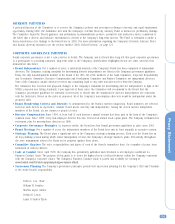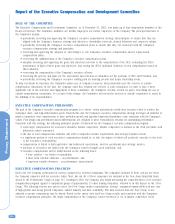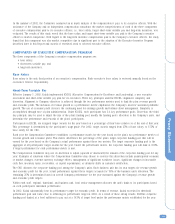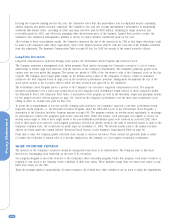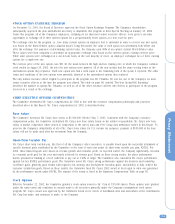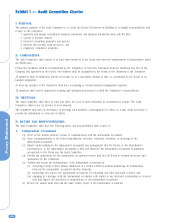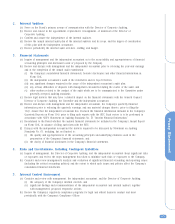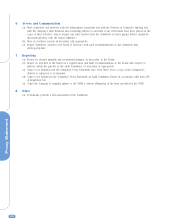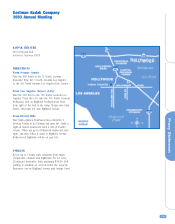Kodak 2002 Annual Report Download - page 122
Download and view the complete annual report
Please find page 122 of the 2002 Kodak annual report below. You can navigate through the pages in the report by either clicking on the pages listed below, or by using the keyword search tool below to find specific information within the annual report.
Proxy Statement
117
2. Internal Auditors
(a) Serve as the Board’s primary avenue of communication with the Director of Corporate Auditing.
(b) Review and concur in the appointment, replacement, reassignment, or dismissal of the Director of
Corporate Auditing.
(c) Confirm and assure the independence of the internal auditors.
(d) Review the annual internal audit plan of the internal auditors and its scope, and the degree of coordination
of this plan with the independent accountant.
(e) Review periodically the internal audit activities, staffing, and budget.
3. Financial Statements
(a) Inquire of management and the independent accountant as to the acceptability and appropriateness of financial
accounting principles and disclosures used or proposed by the Company.
(b) Review and discuss with management and the independent accountant prior to releasing the year-end earnings
and at the completion of the annual audit examination:
(i) the Company’s consolidated financial statements, footnote disclosures and other financial information in
Form 10-K,
(ii) the independent accountant’s audit of the statements and its report thereon,
(iii) any significant changes required in the scope of the independent accountant’s audit plan,
(iv) any serious difficulties or disputes with management encountered during the course of the audit, and
(v) other matters related to the conduct of the audit which are to be communicated to the Committee under
generally accepted auditing standards.
(c) Review legal matters that may have a material impact on the financial statements with the General Counsel,
Director of Corporate Auditing, the Controller and the independent accountant.
(d) Review and discuss with management and the independent accountant, the Company’s quarterly financial
information prior to releasing the quarterly earnings, and any material changes thereto, prior to filing the
10-Q. Assure that the independent accountant has reviewed the financial information included in the Company’s
Quarterly Reports on Form 10-Q prior to filing such reports with the SEC. Such review is to be performed in
accordance with AICPA Statement on Auditing Standards No. 71 “Interim Financial Information.”
(e) Recommend to the Board whether the audited financial statements be included in the Company’s Annual Report
on Form 10-K, in advance of filing such form with the SEC.
(f) Discuss with the independent accountant the matters required to be discussed by Statement on Auditing
Standards No. 61, including, but not limited to:
(i) the quality and appropriateness of the accounting principles and underlying estimates used in the
preparation of the Company’s financial statements, and
(ii) the clarity of financial disclosures in the Company’s financial statements.
4. Risks and Uncertainties, Including Contingent Liabilities
(a) Inquire of management, the Director of Corporate Auditing, and the independent accountant about significant risks
or exposures and review the steps management has taken to minimize such risks or exposures to the Company.
(b) Consider and review management’s analysis and evaluation of significant financial accounting and reporting issues
(including the critical accounting policies) and the extent to which such issues and policies affect the Company’s
consolidated financial statements.
5. Internal Control Environment
(a) Consider and review with management, the independent accountant, and the Director of Corporate Auditing:
(i) the adequacy of the Company’s internal controls, and
(ii) significant findings and recommendations of the independent accountant and internal auditors together
with management’s proposed responsive actions.
(b) Review the Company’s regulatory compliance programs for legal and ethical business conduct and meet
periodically with the Company’s Compliance Officer.




